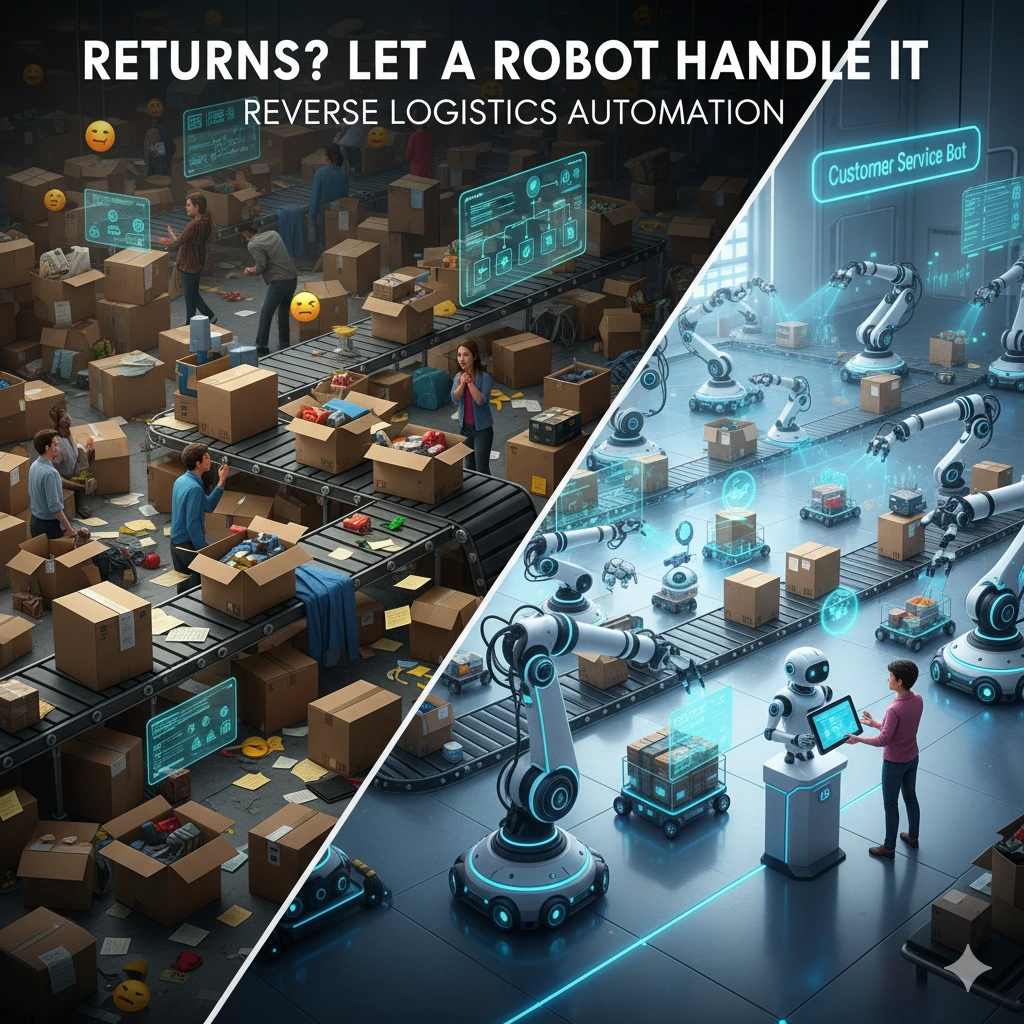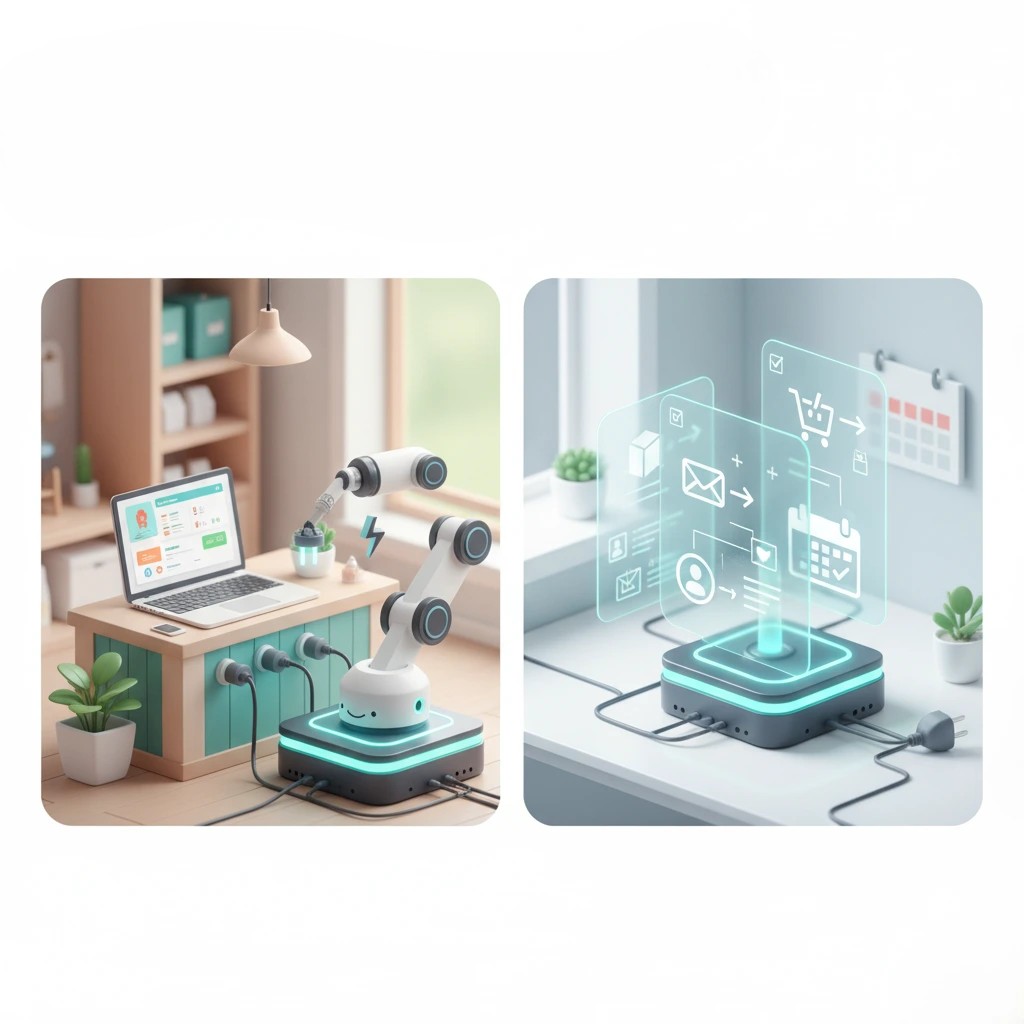Returns have always been the headache of e-commerce, especially for small and medium-sized retailers. According to recent data, nearly 30% of online purchases end up being returned, and handling them manually is time-consuming, costly, and prone to errors. But in 2025, the rise of reverse logistics automation is transforming how businesses manage returns, making them faster, cheaper, and more customer-friendly. By leveraging AI, robotics, and automation platforms, companies are turning a traditional pain point into a competitive advantage.
Why Reverse Logistics Matters
Reverse logistics refers to the process of moving goods from the customer back to the seller, warehouse, or manufacturer. Traditionally, returns involved manual approvals, inspections, restocking, and refunds, creating delays and operational costs. In a world where customer experience is king, a slow or complicated returns process can hurt loyalty and brand reputation.
Automation changes that. With reverse logistics automation, every step—from return initiation to restocking or recycling—can be streamlined. This not only improves efficiency but also reduces human error and operational overhead.
How Automation Transforms Returns
1. Smart Return Portals: Customers now expect a self-service returns process. Automated return portals allow shoppers to select items, choose reasons for return, print shipping labels, and schedule pickups without human intervention. Tools like Returnly, Loop Returns, and Happy Returns integrate with your e-commerce platform to make this seamless.
These portals also provide real-time tracking, giving customers peace of mind while reducing inquiries to customer support teams. In 2025, shoppers consider a smooth return process as important as fast delivery.
2. AI-Powered Decision Making: Not all returns are equal. Some items can be restocked immediately, some need repair, and some should be recycled. AI algorithms analyze return patterns and product conditions to automate these decisions. For example, a system can flag electronics for inspection, clothing for quality assessment, and overstock items for instant resale. This reduces unnecessary human labor and accelerates inventory turnover.
3. Robotic Sorting and Handling: Warehouses are adopting robots and automated conveyor systems to handle returned items. Robots can sort products based on SKU, condition, and destination, moving them efficiently back into inventory or preparing them for refurbishment. This is especially useful for large-scale retailers where manual sorting can create bottlenecks.
Benefits of Reverse Logistics Automation
Implementing automated returns has a direct impact on both the bottom line and customer satisfaction.
- Reduced Operational Costs: Automation eliminates repetitive manual tasks, cutting labor costs and reducing errors that lead to additional expenses.
- Faster Refunds and Exchanges: AI-driven processing ensures customers receive refunds or replacements faster, improving loyalty and trust.
- Sustainability: Automated reverse logistics helps identify items for recycling or donation, reducing waste and supporting green initiatives.
- Data-Driven Insights: Returns are a goldmine of information. Automation tools track patterns and reasons for returns, enabling brands to improve products, sizing, descriptions, and customer support proactively.
Integrating Reverse Logistics Automation in Your Store
For small and medium e-commerce stores, integrating automation doesn’t require a complete overhaul. Here’s a step-by-step approach:
Step 1: Evaluate Your Return Volume and Policies – Determine which items have the highest return rates and why. This helps prioritize automation.
Step 2: Implement a Smart Returns Portal – Choose a platform compatible with your e-commerce store (Shopify, WooCommerce, Magento). Enable automated label generation, tracking, and customer notifications.
Step 3: Automate Decision Rules – Use AI-driven tools to categorize returns and decide on restocking, refurbishment, or recycling. These rules reduce manual inspection needs.
Step 4: Integrate Warehouse Automation – For stores with high return volume, adopt robotic sorting or conveyor systems to accelerate processing. Smaller stores can start with software automation and scale up as volume grows.
Step 5: Analyze Data and Optimize – Track return reasons, processing times, and costs. Use this data to refine inventory management, product descriptions, and fulfillment strategies.
The Future of Reverse Logistics
In 2025, reverse logistics automation is more than a convenience — it’s a differentiator. Retailers who embrace automation can offer hassle-free returns, faster refunds, and superior customer experiences, all while reducing costs and environmental impact.
Emerging trends include:
- Predictive Returns Management: AI predicts which products are likely to be returned and adjusts inventory, packaging, or recommendations proactively.
- Blockchain-Enabled Tracking: Transparent tracking for returns ensures authenticity, reduces fraud, and provides customers with complete visibility.
- Robotics and AI Integration: Advanced robotics, AI vision systems, and smart sorting algorithms will handle almost all returns autonomously in high-volume warehouses.
Why Customers Love Automated Returns
A smooth return experience builds trust and loyalty. Customers are more likely to buy again if they know that returning an item will be quick and easy. In fact, studies show that businesses with efficient returns processes often enjoy higher repeat purchase rates. Automated reverse logistics ensures that shoppers experience seamless refunds, exchanges, or replacements, reinforcing the perception of a reliable, professional brand.
Conclusion
Reverse logistics automation is no longer optional for forward-thinking e-commerce businesses. By combining AI, robotics, and automation software, retailers can reduce operational costs, speed up returns, improve customer satisfaction, and even support sustainability goals. In 2025, when customers say “I want to return this,” your robots, AI algorithms, and automated systems will handle it — fast, accurate, and without a single human hand in the process.
Returns don’t have to be a pain. With the right automation strategy, they can become a competitive advantage, turning a traditional problem into a smooth, cost-effective, and customer-friendly operation.


